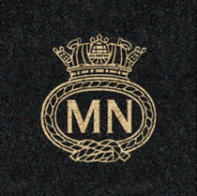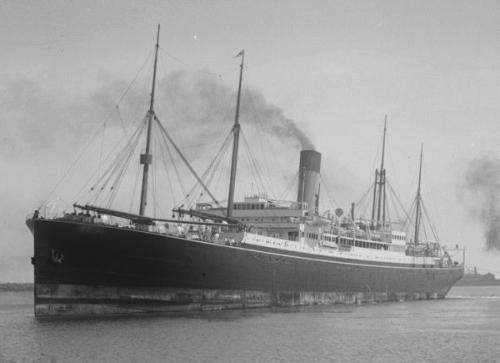
copyright © Wartime Heritage Association
Website hosting courtesy of Register.com - a web.com company
Wartime Heritage
ASSOCIATION
Remembering World War II
Joseph Hazel was 20 years of age when he was lost at sea during the sinking of the SS Ceramic.
He was born in Halifax, Nova Scotia on January 1, 1922; however, little is known of him until his
arrival in Southampton, England in the early 1940’s. He joined the crew of the SS Ceramic and
served as an Assistant Steward.
Joseph listed his birth place as Halifax, Nova Scotia, Canada, and address as 86 Wellington Road,
Liverpool, England. This was the home of Edward Powe (b. 1875), his wife, Mary (b. 1875), a son
Hugh (b. 1905), and a daughter Agnes (b.1926). Edward was employed as a dock labourer and
Hugh as a general Labourer. Agnes was a student and aged 16, 1942. Joseph listed as his next of
kin his “friend, Miss Agnes Powe.”
Joseph Hazel is commemorated on Page 154 of the Merchant Navy Book of Remembrance
and listed on Panel 21 of the Halifax Memorial in Nova Scotia.
The SS Ceramic
On November 23, 1942, the SS Ceramic, a British
ocean liner departed Liverpool England bound for
Sydney, Australia via Durban, South Africa carrying
656 people. There were 264 crew members, 14
gunners, 244 military and naval passengers,
including 30 nurses of the Queen Alexandra’s
Imperial Military Nursing Service, and 133 fare
paying passengers, among them 12 children.
After initially sailing with a convoy, the Ceramic
broke off to travel independently toward Cape Town
when the convoy was dispersed dur to U-boat
activity. On the night of December 6, 1942, while
navigating the Atlantic about 400 miles west of the
Azores, the ship was attacked by German submarine
U-515. Mistaking the Ceramic for a troopship, the U-
boat Captain launched multiple torpedoes. The first
struck the vessel, prompting an evacuation, but the
ship remained afloat until subsequent torpedoes caused it to sink.
The crew launched approximately eight full laden lifeboats, despite of the cold weather, the rough seas, and the poor visibility in
the darkness, but many were damaged or capsized in the rough seas. The Ceramic stayed afloat and three hours later U-515 hit
the ship with two more torpedoes, which broke her in two and she sank immediately.
The U-boat Captain reported the sinking to the supreme commander of the German Navy's U-boat Arm and was ordered to return
to the site to find the C of the Ceramic and to find out where the ship had been bound. At about midday, the surfaced U-515
returned. At this time, the wind had reached speeds of 55–63 mph and a storm started. The sea was almost swamping the conning
tower, so the U-Boat Captain ordered his men to take the first survivor that came close enough to his vessel. Two men threw a
rope to one of the men in the water, Sapper Eric Munday of the Royal Engineers, took him aboard and U-515 left the area. Of
the hundreds aboard, only he survived and later held as a prisoner of war in Germany.
A distress signal from Ceramic had been heard and HMS Enterprise and the Portuguese destroyer Dao were sent to search for
survivors on December 9; however, no survivors were found.
The loss of the Ceramic was one of the most devastating maritime disasters of World War II. The ship’s disappearance was at first
little publicised due to the general censorship of shipping information, and the Admiralty assumed that she had been sunk
without survivors. Post war, information became available from the account of Sapper Eric Munday and testimonies from some of
the crew of U-515.
Joseph Hazel


Sources:
Canadian Virtual War Memorial
uboat.net
Census Records, England 1939
British Merchant Navy Records




- World War I - Menu
- WWI Stories and Articles
- Photos - Yarmouth Soldiers
- Selection of World War I Songs
- WWI Casualties of Yarmouth, NS
- Those Who Served - Yarmouth, NS
- WWI Casualties Digby Co. NS
- WWI Casualties Shelburne Co. NS
- Merchant Mariners (1915) Yarmouth, NS
- Canadian Forestry Corps - Non Yarmouth Birth/Residence Enlistments
- US Draft Registry - Yarmouth NS Born


- World War II - Menu
- WWII Stories and Articles
- Telegraphist Air Gunners
- WWII Casualties of Nova Scotia
- US Casualties with NS Connection
- Far East/Pacific Casualties with NS Connection
- Merchant Navy Casualties Nova Scotia
- Nova Scotia WWII Casualties Holten Canadian War Cemetery
- D-Day Casualties - Nova Scotia
- CANLOAN Program Casualties - Nova Scotia
- Battle of the Bulge Casualties - Nova Scotia
- WWII Casualties Yarmouth NS
- Yarmouth Casualties - RCAF RAF Canadian Army WWII
- Yarmouth Co., Marriages WWII
- Casualties Non-Born/Residents with Connection to Yarmouth Co., Nova Scotia.
- WWII Casualties Digby Co., NS
- Non-Nova Scotian WWII Casualties Buried in Nova Scotia
- WWII RCAF Casualties Aged 16-18
- Brothers/Sisters Who Served - World War II













